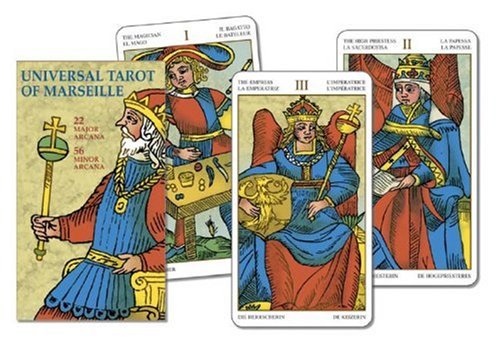
The Universal Marseille Tarot takes us directly to the origin of tarot. The highly sought-after deck by Claude Burdel (1727-1799), originally rich with divinatory suggestion, has been beautifully restored-giving new energy to the ancient images and amplifying their symbolic meaning.

Claude Burdel 1751, recoloured by Lee Bursten This is one of three Marseille tarot decks produced by Lo Scarabeo in Italy. This one is a recoloured version of the deck drawn by Claude Burdel in 1751. This makes it one of the oldest available Marseille decks, much older than the versions of Grimaud (1898) or Paul Marteau (1930), but not as old as the decks by Jean Noblet (1650) or Jean Dodal (1701-1713).If you want one of those older decks: Cartamundi have produced a recoloured version of the Dodal deck, but the recolouring is not very sympathetic – if you were going for an older deck, then the colouring would be important to you. In this case, you have to go to the hand-coloured works of Jean-Claude Flornoy.This deck also appears under the ISBN 0738710415: .
It’s a pip … “Pip” decks are those where the minor cards are NOT pictorially interpreted for you — the Ten of Cups, for example, will remind you of a modern-day Ten of Hearts, with the addition of miscellaneous vines, fleurs de lis, etc. which act in combination with the pattern formed by the Cups, Wands, Swords, and Coins to suggest to yourself what you are thinking.Sound complicated? It’s not, really; read on.The Marseille Tarot is the Grand Daddy of ’em all — designed and executed by an artist unknown ‘way back in the 15th century for use as a card-game-playing deck, it is composed of basic, instantly-recognizable archetypal images. Some folks suspect these images were created to pass along knowledge forbidden by the church of that time in such way that even illiterate persons could tell at a glance what was being discussed. Not “occult” knowledge, that came later, after the early occultists found that the images in this deck corresponded with certain notions of…